💱📖Trading Laws, Thermondynamics & Enshittification
13 August 2023
Welcome back to the Week That Was series highlighting things from the interwebs which are interesting, noteworthy and/or probably worth your time.
Articles📝, Tweet(s)📱, Videos🎥, Charts 📈 all fair game with or without attendant commentary.
🎨 Roboto

Robot Bust, artaworks, 3D, 2023
🌀 Widening Gyre
Appropos of nothing, the first stanza of Yeats’ famous piece:
- Turning and turning in the widening gyre
- The falcon cannot hear the falconer;
- Things fall apart; the centre cannot hold;
- Mere anarchy is loosed upon the world,
- The blood-dimmed tide is loosed, and everywhere
- The ceremony of innocence is drowned;
- The best lack all conviction, while the worst
- Are full of passionate intensity.

Feels… apt. Particulartly the last two lines.
📊📉 Five Graphs
Per Bob Cottrell:
“This stylish animation walks viewers through two centuries of data visualisation. Moving from the physician John Snow’s cholera dot-map of London from 1854, to a disturbing instance of eugenic misinformation, to the warming stripes charting today’s climate crisis, the video highlights five data visualisations that gave rise to the form, and changed the world”
📹
🌐👨🏾💻 Search Tips
Fascinating, very long and very useful post from the inimitable Gwern.
A very accurate boomer take on it:
Don’t be fooled by the bland title. Everyone can learn from this magnum opus. Beginning with simple advice, such as on how to master Boolean operators and search hotkeys, Gwern takes the reader through increasingly advanced strategies for finding research papers, books, theses and other references online. Some of these tips may be known to you, others definitely will not.
If you’ve been experiencing a degrading in the utility of Google Search over the last half a decade as SEO-hacking & ads dominate first-page results, you’re not alone (and that’s a topic for a section further below).
🎨 Art Block

Art Block, Daniel Conway, Digital, 2022
📈🚗 Uber Profit
Per Search, I’m sure we’ve all felt the deterioration in Uber cab quality and service in recent years as well. What you’re experiencing is the slow shift from your rides being subsidised by sovereign wealth funds and venture capital - to having to pay for themselves as Dara Khosrowshahi moves the company’s strategy from “grow at all costs” to “becoming profitable”.
In fact the company has printed an operating profit for the first time after having “built up $31,5Bn in operating losses since 2014”
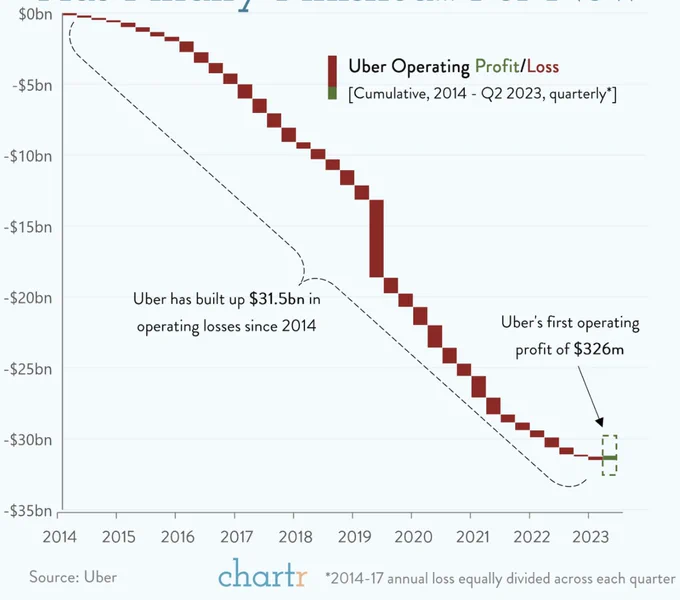
Will they find an AWS-esque profit engine ala Amazon to drive a new phase of the company without the continued degredation on the rider experience (and driver profitability) side? Time will tell.
Here’s Dara in his own words though chatting to the Acquired crew about the road to cashflow positivity, his career before taking over from Travis and how the Uber CEO search process ACTUALLY went down.
🎙️
🎧🌍📺 Streaming
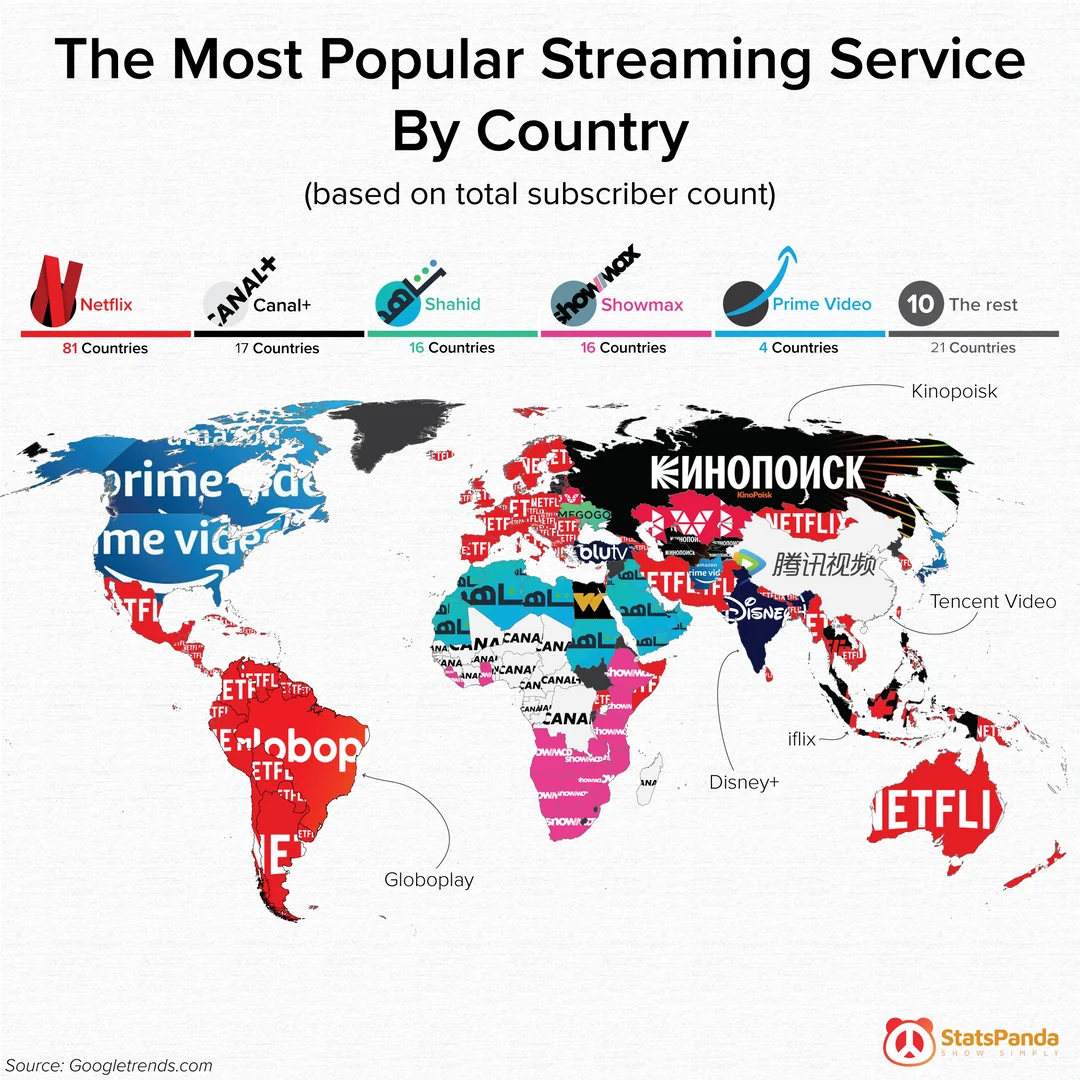
(Credit: Dremarious)
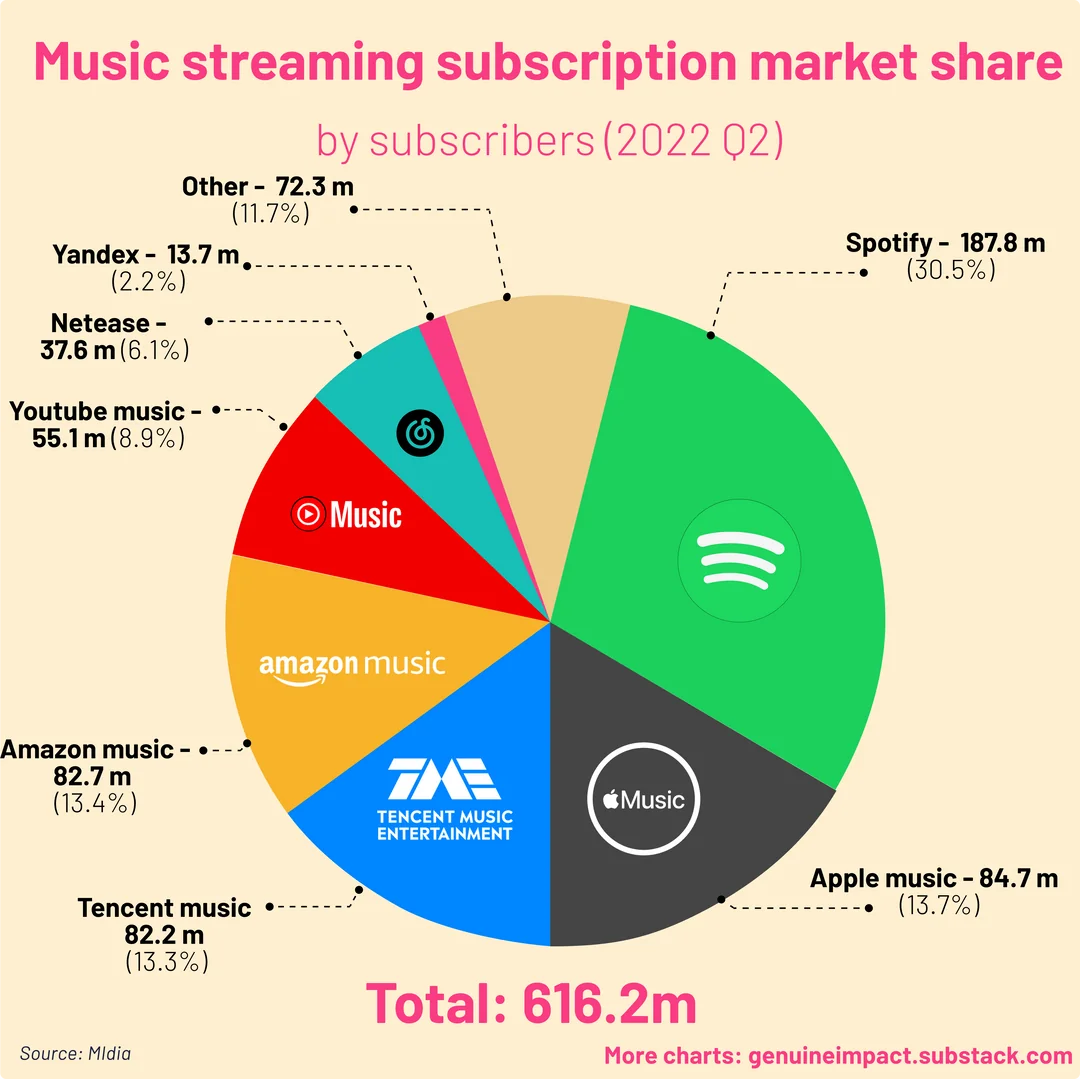
(Credit: Genuine Impact)
💩💻 On Enshittification
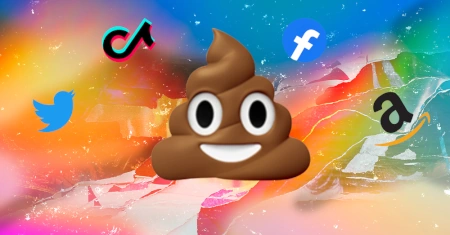
And to finally bring home this subject of internet platform businesses striving first for market share, then profit, then consistent growth and returns for shareholders - this is what has been at the heart of the phenomenon we’re all experienced called ‘Enshittification’.
To best explain, here are some excerpts from Cory Doctorow’s 📝piece called “The ‘Enshittification’ of TikTok”
Here is how platforms die: first, they are good to their users; then they abuse their users to make things better for their business customers; finally, they abuse those business customers to claw back all the value for themselves. Then, they die.
I call this enshittification, and it is a seemingly inevitable consequence arising from the combination of the ease of changing how a platform allocates value, combined with the nature of a “two sided market,” where a platform sits between buyers and sellers, holding each hostage to the other, raking off an ever-larger share of the value that passes between them.
(SG: Paraphrasing) Surpluses are first directed to users; then, once they’re locked in, surpluses go to suppliers; then once they’re locked in, the surplus is handed to shareholders and the platform becomes a pile of 💩. From mobile app stores to Steam, from Facebook to Twitter, this is the enshittification lifecycle.
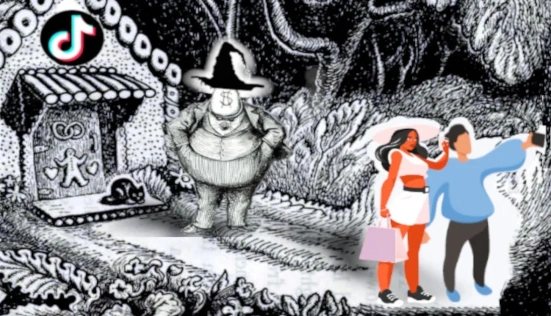
As mentioned you’ve seen this play out on Uber and Google Search, but also Facebook, Amazon, Youtube, Twitter/X … ad infinitum.
I also enjoyed these snippets:
‘Tiktok, for all that its origins are in the quasi-capitalist Chinese economy, is just another paperclip-maximizing artificial colony organism that treats human beings as inconvenient gut flora.’
Enshittification has only lasted for as long as it has because the internet has devolved into “five giant websites, each filled with screenshots of the other four”
The emphasis of lawmakers and policymakers shouldn’t be preserving the crepuscular senescence of dying platforms.
He has a very technical discussion with Leigh Beadon on Tech Dirt’s podcast ostensibly about his new book but touching on this subject and just the idea of trust on the internet and those who purvey the services we all use.
🎙️
🎙️📹 Joscha x Lex
Lex Fridman sits down for the 3rd time with pod favourite (and one of my favourite pod guests as well) cognitive scientist, AI researcher, and philosopher Joscha Bach to talk about everything from the Stages of Life, Artificial Consciousness, How To Think, Effective Accelerationism and the Meaning of Life.
I also highly recommend their first two conversations:
💲💱📖 Trading Laws

Phenomenal review of Agustin Lebron’s book 📖The Laws of Trading: A Trader’s Guide to Better Decision-Making for Everyone. Per Lebron himself, it’s a book which is for people working in finance and trading, as well as anyone in the business of making rational decisions.
With an explicitly rationalist bent similar to Julia Galef’s The Scout Mindset or Annie Duke’s Thinking in Bets, where The Laws of Trading sets itself apart is with one of the best description of financial market dynamics that available while diving deep into philosophical concepts.
Why trust Lebron? Per the review:
He is an engineer, worked as a quantitative trader and researcher at Jane Street, and has a deep understanding of trading. He has what Taleb would describe as skin in the game. You and I may read Astral Codex Ten in our spare time, post on LessWrong, and navel gaze about our epistemic certainty, but at the end of the day most of us are pursuing rationality for fun, as a hobby. Traders like Lebron pursue rationality as a profession: Their livelihood depends on having a better model of the world than their competition. There are lessons to learn from them that apply to our daily lives.
🎧
Here’s a podcast version of the post if you’d prefer to listen to it
Gwern (there he is again) added two citations in the comments relating to the piece for anyone keen to geek out even further.
“Re: I’m reminded of the story of Richard Feynman in academia. His colleagues who kept their office doors closed made progress on their research in the short-term, but hit stumbling blocks. Those who kept their doors open didn’t seem to make much progress initially, but eventually outpaced the “closed door” scientists. They had new ideas and research directions based on all the interesting conversations they were having with others.”
You are thinking of Richard Hamming: https://gwern.net/doc/science/1986-hamming#open-door-policy
“Re: The Bayesian citation”
For those wondering, the Bayesian cite is “Bayesian estimation and the Kalman filter” https://core.ac.uk/download/pdf/82197354.pdf
🐍🦟⚠️ Deadliest Animals

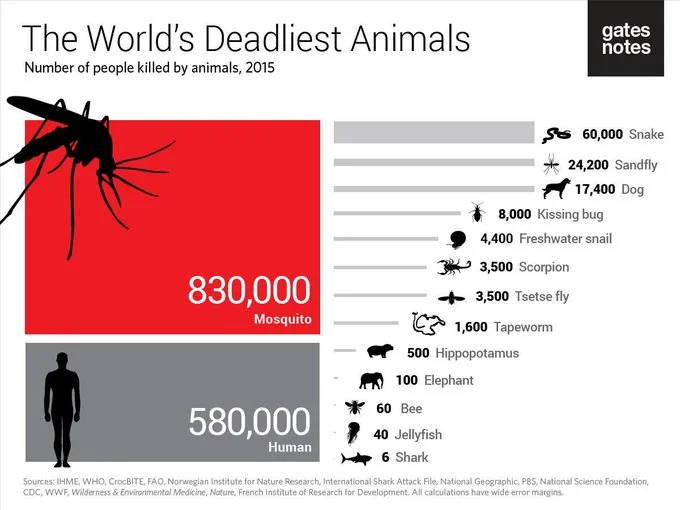
Source: Gates Notes
📜 Ampersand

From an interesting handle on 𝕏 (okay fine, I’ll just call it that) called @culturaltutor on what was once connsidered the 27th letter of the alphabet
But there are three parts to this story. And the first begins over two thousand years ago in Ancient Rome with a single word: et. It’s the Latin for “and”. At some point Roman scribes started combining the two letters of et into a single symbol, which was the ancestor of our modern &.
The earliest example of the “et” symbol is actually from graffiti in Pompeii. In any case, it did not disappear with the fall of the Roman Empire.
Latin survived as the language of the Catholic Church and of scholarship in Medieval Europe. Scribes during the Dark Ages continued to use the & symbol. It evolved down the centuries, in places losing any semblance of the letters e and t whatsoever.
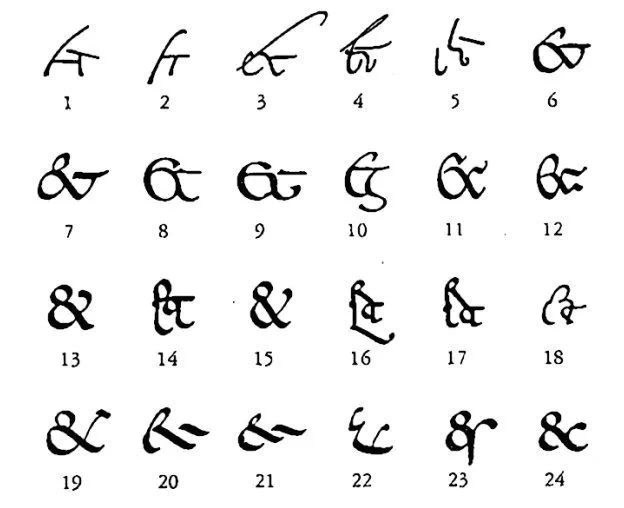
The second part of the story is that during the 18th and 19th centuries, as education and the teaching of literacy spread, & was added to the end of the alphabet as a sort of 27th letter.
On a related note, although “et cetera” is now usually just abbreviated as etc., for a long time it was instead abbreviated as “&c”. The & was for et and the c for cetera.
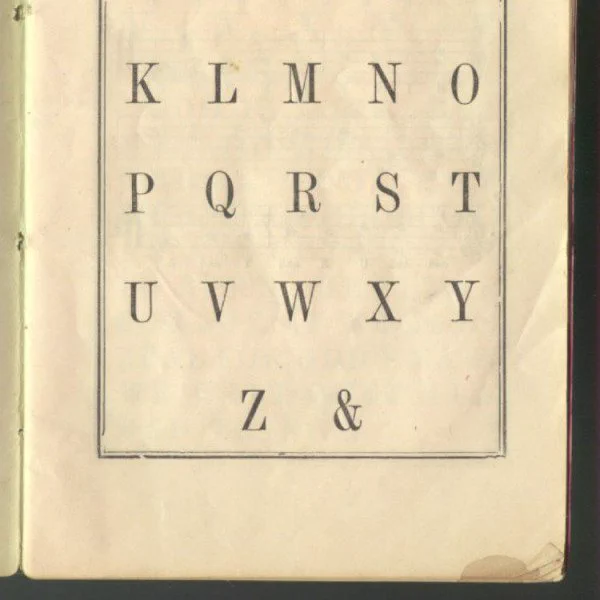
The third and final part of the story is about how the alphabet was taught to children — and how it was read out loud.
As this 1822 Glossary of Words and Phrases explains, it had been normal during the Renaissance, when speaking the alphabet, to add “per se” before any letter which could also be a word on its own — “per se” means “by itself” in Latin.
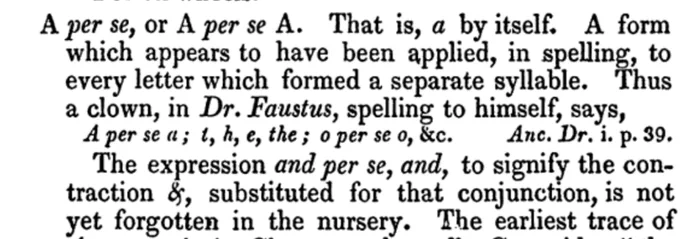
Take the letter A, which can also be a word of its own. When reading out the alphabet people would say “A, per se A, B, C, D, E, F, G, H, I, per se I…” and so on. O was also considered a word of its own.
Which means, when people got to the end of the alphabet, with & being the 27th letter, they would say: “S, T, U, V, W, X, Y, Z, and per se &.”
When this old way of reading the alphabet was taught to children in the 18th century and they were reciting it aloud, they would garble “and per se " into what eventually became… ampersand.
A Dictionary of Slang and Colloquial English from 1905 relates some of the many other pronunciations school children apparently came up with: Ampersand. The sign &; ampersand. Variants: Ann Passy Ann; anpasty; andpassy; anparse; apersie; per-se; ampassy; am-passy-ana; ampene-and; ampus-and; ampsyand; ampazad; amsiam; ampus-end; apperse-and; empersiand; amperzed; and zumzy-zan.”
Well, of all the many pronunciations that might have stuck, it was “ampersand” which came to be accepted and is now the official name for &… rather than zumzy-zan. So, from hurried Roman scribes to unruly school children, that’s where “&” came from.
🎨 Remain True

Remain True In A Fake World, Jeffrey Smith, Digital Painting, 2023
💬 Deep Cuts
“It is we who project order into the world by selecting objects and tracing relations so as to gratify our intellectual interests. We carve out order by leaving the disorderly parts out; and the world is conceived thus after the analogy of a forest or a block of marble from which parks or statues may be produced by eliminating irrelevant trees or chips of stone.” - William James
🧑🏽🎓 One more thing
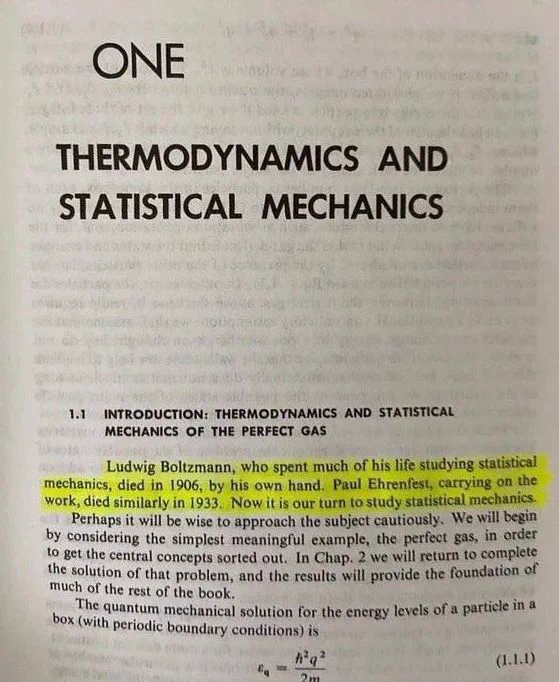
📧 Get this periodically in your mailbox
Thanks for reading. Tune in again and please share with your network.
Links The Week That Was Pickings
62e6875 @ 2023-08-14